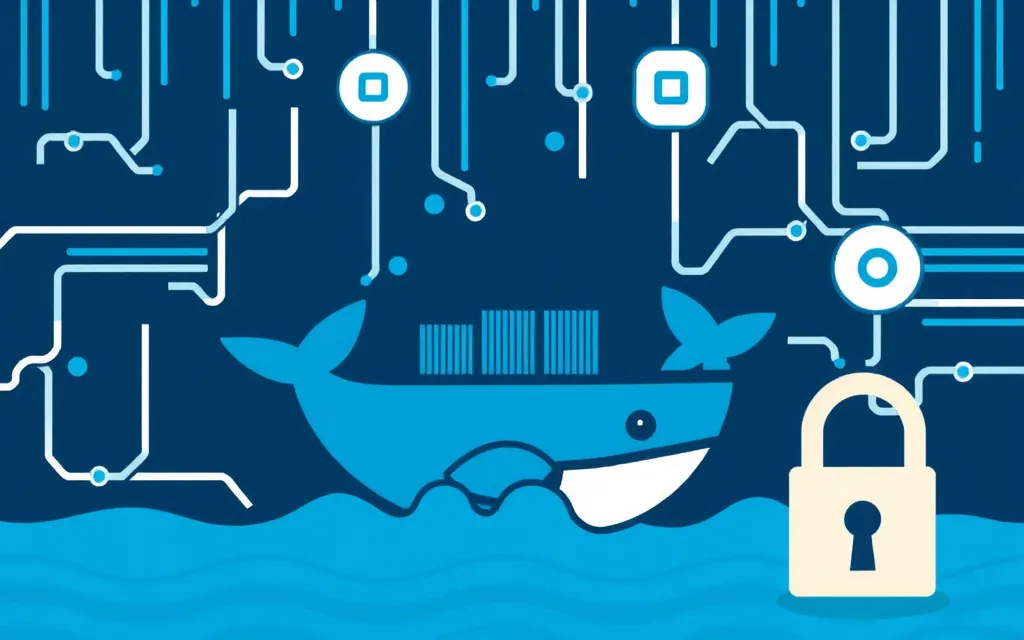
Docker containers have transformed application development and deployment, offering unmatched flexibility and efficiency. However, this convenience introduces unique security challenges. Mastering Docker image security is essential for maintaining a strong security posture. This article delves into essential practices for securing Docker images, explores advanced tools, and underscores the importance of container image vulnerability scanning.
Why Securing Docker Images is Non-Negotiable
Docker images are the foundation of containerized applications, encapsulating everything needed to run an application—code, runtime, libraries, and system tools. Yet, if these images harbor vulnerabilities, they pose significant security risks. Alarmingly, a report reveals that 87% of container images in production have critical or high-severity vulnerabilities. This statistic underscores the urgent need for effective Docker image security measures.
Top Strategies for Docker Image Security
Start with Minimal Base Images: Reduce your attack surface by using minimal base images. Google's Distroless images exemplify this approach, containing only essential components to minimize vulnerabilities.
Stay Updated: Keep Docker images current with the latest security patches. Chainguard's hardened container images, available on Docker Hub, automate updates, simplifying vulnerability management.
Adopt a Zero Trust Model: Enforce a zero trust architecture by implementing strict access controls and continuous identity verification. This strategy reduces the risk of unauthorized access to containerized applications.
Conduct Regular Vulnerability Scans: Use tools like Harbor to regularly scan Docker images for vulnerabilities, identifying CVEs and assessing their severity and associated packages.
Utilize Security Tools and Frameworks: Leverage frameworks like the MITRE ATT&CK for Containers to effectively map and mitigate container-related threats.
Advanced Tools for Docker Image Security
Several cutting-edge tools can help secure Docker images and ensure they are free from vulnerabilities:
Harbor: A comprehensive Docker registry offering vulnerability scanning capabilities. It identifies and assesses vulnerabilities in Docker images, providing detailed CVE reports.
Bazel with rules_oci: This toolset builds secure container images by adding supply chain security metadata and supporting the generation of a software bill of materials (SBOM).
Chainguard Images: Low-CVE images designed to minimize vulnerabilities. They include security SBOMs for tracing software code sources and ensuring compliance.
The Critical Role of Container Image Vulnerability Scanning
Vulnerability scanning is a cornerstone of Docker image security. It involves analyzing container images for known vulnerabilities and assessing their potential impact. Tools like Harbor and Clair automate this process, offering detailed vulnerability reports and aiding organizations in evaluating image safety.
Your Docker Image Security Checklist
To ensure comprehensive security for your Docker images, consider this checklist:
- Use minimal base images to reduce the attack surface.
- Regularly update images with the latest security patches.
- Implement a zero trust model with strict access controls.
- Conduct regular vulnerability scans using tools like Harbor.
- Leverage security frameworks like MITRE ATT&CK for Containers.
- Use hardened images like Chainguard's low-CVE offerings.
- Ensure compliance with security SBOMs and trace software code sources.
Conclusion: Fortifying Your Docker Ecosystem
Securing Docker images is an ongoing process demanding vigilance and the right tools and practices. By adhering to best practices and utilizing advanced security tools, organizations can significantly mitigate vulnerabilities in containerized applications. As the landscape of container security evolves, staying informed and proactive is key to maintaining a secure Docker ecosystem.
What strategies have you found effective in securing your Docker images? Share your insights with us or suggest further reading for those interested in deepening their understanding of Docker security.

